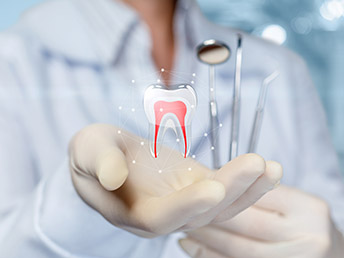root canal treatment
Root canal treatment, also known as endodontic therapy, is a procedure in which an infection at the center of the tooth is treated. Millions of people go through a root canal procedure every year, and it’s not surprising considering that root canal therapy can save a tooth. So, let’s take a look at how this procedure can relieve pain and allow you to smile again.
understanding root canal treatment
To understand root canals, it is important to understand how the tooth is structured. The tooth has a hard external layer known as the enamel. Beneath the white enamel, there is another hard layer known as dentin, which surrounds soft tissue known as the pulp. The pulp is where the nerves, blood vessels and connective tissue are found. This is what ensures the growth of the tooth’s root when it is developing. However, once the tooth has fully developed, it can survive with the pulp because it can receive nourishment from the surrounding tissue.
Root canal treatment is used to treat the pulp inside the tooth and is required especially when the area becomes infected or inflamed, which can be the result of deep decay, faulty crowns, cracked or chipped teeth, or repeated procedures on a single tooth. Trauma can also damage the pulp even if there is no apparent damage to the tooth. If not treated with root canal therapy, the infection can spread causing the tissue around the tooth to become red and inflamed. Neglect can cause severe pain and in some cases lead to an abscess, causing your face to swell. If left untreated for an extensive period, it can usually mean needing to extract the tooth altogether.
root canal treatment steps
Root canals were once very painful, and still has a negative connotation to most. However, at Robertson Family Dentistry, we do our best to limit the amount of discomfort so that it feels about the same as a regular tooth filling.
First, we X-ray the affected tooth to see how much damage there is. During this examination period, we provide details on our best recommendation and will always do our best to save the afflicted tooth. Upon the decision between the patient and our professionals, we will numb your gums with a jelly-like substance and administer a local anesthetic via injection. As painful as the injection sounds, and no matter how inflamed the pulp is, you should feel very limited pain which is typically only minor pressure. Until you are completely numb, we will not begin treatment to ensure you feel no pain.
At this point, a small hole is drilled into the tooth, either on the biting surface if it is a back tooth or from behind if it is a front tooth. This will give us access to the pulp so we can remove it. We use special instruments to remove the pulp. Because this area is numb and the pulp is either dead or dying, you will not feel pain. Once we have completely removed the pulp, the tooth will no longer be able to feel pain.
The canal is then disinfected using antiseptic and antibacterial solutions. If necessary, we will shape the canal to ensure we can put the filling in and seal it off. The canal is then washed to remove any debris, and then sealed off. The hole is sealed with a temporary or permanent filling. After a root canal treatment, a crown or permanent filling will be necessary.
what to expect after a root canal
After root canal therapy, you may experience continued numbness in your gums and lips. Once the anesthetic wears off, though, you’ll regain sensation. You might experience some throbbing pain, but it can usually be treated with an over the counter painkiller. If that does not work, we will prescribe stronger pain medication. However, the pain will not last more than a few days.
The idea of root canal treatment may scare you but the fact is that it is necessary, unless you like living with constant pain and don’t mind losing your tooth. If you are wondering if you need a root canal, we can only answer that after a consultation. However, if you are feeling a dull, throbbing pain and feel pressure inside your tooth, there is a good chance you will require root canal therapy. Don’t delay and neglect the concern. Book an appointment today so we can make your persistent toothaches a thing of the past!

